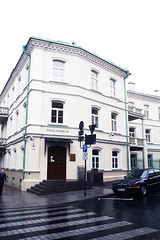
PREV ARTICLE
NEXT ARTICLE
FULL ISSUE
PREV FULL ISSUE
HOWARD BERLIN VISITS VILNIUS, LITHUANIANumismatourist Howard Berlin is on the road again. Here's his latest report
for The E-Sylum readers, this time from Vilnius, Lithuania. Thanks! -Editor
Despite having been in over 54 countries, I had never visited any of the three Baltic countries. While in Helsinki several times, I could barely make out the skyline of Tallinn, Estonia across the sea, but never had the time to take even the ferry for a day trip. This time, I planned a trip of four days in Vilnius and Tallinn, first stopping in Berlin. After spending 24 hours in Berlin, I flew to Vilnius, Lithuania (the original home of my material grandfather and sculptor Victor David Brenner) via an airplane transfer at Copenhagen. It’s surprising how often I run into a numismatic item without really trying while traveling, some of which have been told in past issues of The E-Sylum. This time in my hotel in Vilnius, I saw this oval table top in the hallway a few yards from my room. What caught my eye as I passed the table was a scattering of coins from quite a few countries. However, none were U.S. coins, not even the lowly penny. 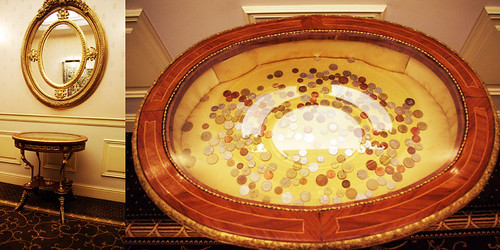 The day following my arrival in Vilnius, I went to the Money Museum of the National Bank of Lithuania, and met with Ms. Vita Beržiunaite, a curator there. I had written about the museum in my book, but nothing beats actually being there.
The History of Money Hall is located in the basement, presents the development of money from its most primitive forms, like grain, cowrie shells, furs, and amber to electronic money. The History of Banking Hall on the ground floor where visitors are introduced to the beginning of Lithuanian banking to the present day. The Contemporary Money Hall showcases banknotes and coins used in different countries today. Visitors can view the banknotes put in special drawers after pulling open the drawer with the name of a selected country. The drawers are connected by special sensors to a computer program that activates the screen on a video wall and presents relevant information about the selected country on it. This information for about 200 countries can also be viewed on the wall using a computer terminal. Also in this hall, information is presented about the Bank of Lithuania, the nation’s central bank. In the Lithuanian Money Hall, exhibits are able to be seen using a vertical automatic conveyor. Each of the eight conveyors carries plastic cards with the coins of the Grand Duchy of Lithuania, Republic of Lithuania, and other territories which had been in circulation in the country. Pushing a button allow visitors to adjust the height of viewing the cards with the coins, and raise or pull down a lens to view small elements of a coin. In the stationary cases are the commemorative coins of the Republic of Lithuania and in the 20 pull-out cases, the banknotes used in the country from the late 18th century to the present day are on display. While discussing her museum, Vita mentioned another museum, the National Museum of Lithuania, that had some coins on display. I took a cab to the museum and once inside, I asked the lady at the cashier’s booth about the coins on display. She walked me to the area and when I asked, said I could take some pictures. After snapping a few, another lady, I guess a docent, sounded very authoritative in Lithuanian which I gathered from her shaking her head and waving her index finger – no photography! There are some nice items on display here but I don’t have any real pictures of them. Apparently I needed to get permission from el jefe (the director) to take pictures, but she wasn’t in. “Šudas!” (sh#*t, as they say it in Lithuanian) – Oh well. perhaps on another visit before Putin annexes the country. The museums of Tallinn, will appear in a following issue of The E-Sylum. 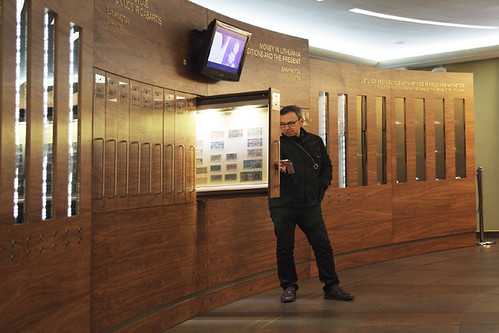 A partial view of the museum’s Lithuanian Money Hall, illustrating the history of Lithuania’s currency. There are sliding magnification lens for coins and pull-out panels for currency.  The museum’s Contemporary Money Hall with over 200 countries represented. 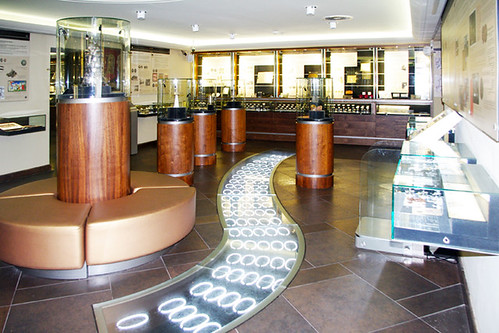 History of Money Hall covering ancient monies to the present. 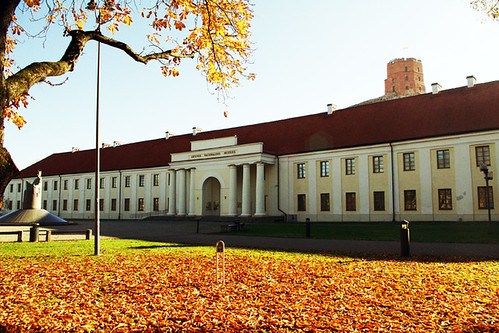 The National Museum of Lithuania, which has a few display case of coins. In the background high up on a hill is the 15th-century Gediminas’ Tower, the remaining part of Vilnius’ historic “Upper Castle” which is depicted on the national currency. Wayne Homren, Editor The Numismatic Bibliomania Society is a non-profit organization promoting numismatic literature. See our web site at coinbooks.org. To submit items for publication in The E-Sylum, write to the Editor at this address: whomren@gmail.com To subscribe go to: https://my.binhost.com/lists/listinfo/esylum All Rights Reserved. NBS Home Page Contact the NBS webmaster 
|
